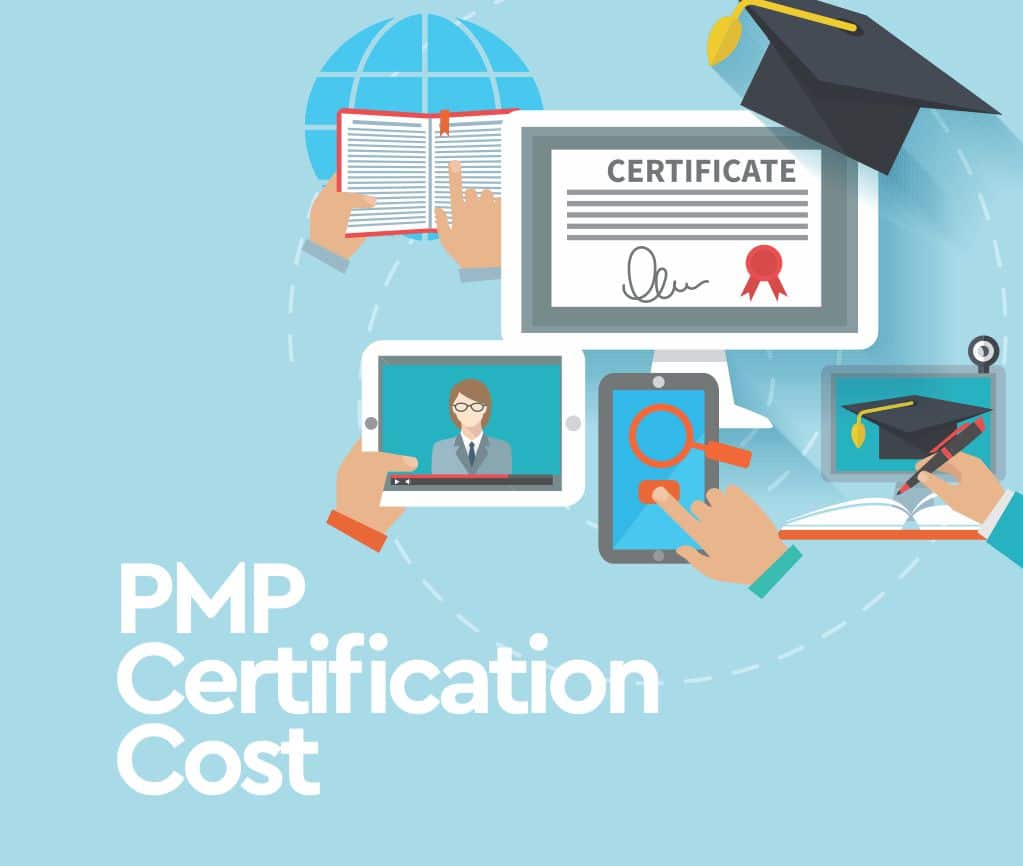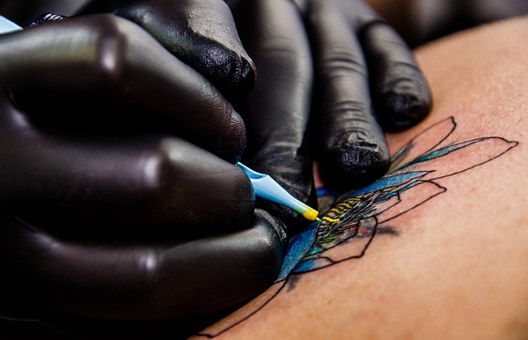Do you want to be part of the healthcare field? Medical coding or billing is a great career choice for you. It’s a fast-growing career that would let you enter the highly respected medical field.
Medical coders play a very vital role in the healthcare system. Using their knowledge of thousands of medical codes, payment policies, and government regulations, medical coders take medical records and code them for billing and insurance purposes.
Owing to the technicality and knowledge-centric nature of the job, being a medical coder doesn’t just happen; there are specific steps you need to take to be a medical coder.
Given these points, are you looking for a great rewarding career with great employment opportunities? Learn how to become a Medical Coder today.
We broke down the entire process into five simple steps. Read along to see how easy it can be.
Table of contents
Who Is A Medical Coder?
Medical coding specialists review detailed information about patient injuries, diseases, and procedures from medical records and documents provided by doctors and other healthcare providers.
Medical coders work in the billing or “back office” of medical practices or hospitals.
They then assign codes for the information based on an official, universally used coding system.
These medical codes are often used to reimburse claims by hospitals and their physicians for insurance purposes.
However, Medical coders perform some of the most critical behind-the-scenes work of medical facilities. They ensure that patient data is accurately logged in electronic health records (EHRs).
Medical coding also requires a detail-oriented approach and a specialized technical skillset. It is an ideal profession for those who want to work in non-patient-facing positions within the healthcare industry.
According to the U.S. Bureau of Labor Statistics. A rapid increase in the adoption of electronic health records (EHRs. This means that medical coding is a career that’s projected to grow faster than the average occupation, according to the U.S. Bureau of Labor Statistics.
Importantly, Having at least an associate’s degree and a credential in coding are preferred qualifications for this profession.
Furthermore, Medical coders need to be fluent in coding systems like the Current Procedural Terminology (CPT), International Classification of Diseases (ICD), and the associated Healthcare Common Procedure Coding System (HCPCS).
Also, after completing their preliminary education, they are presented with credential opportunities that can distinguish a coder from the pack and kickstart their career.
What is Medical coding?
Medical coding transforms healthcare diagnoses, procedures, medical services, and equipment into universal alphanumeric codes.
The diagnoses and procedure codes are taken from medical record documentation, such as transcription of physician’s notes, laboratory and radiologic results, etc.
Why Medical Coding?
To help promote a smooth coding and billing process, the coder checks the patient’s medical record (i.e., the transcription of the doctor’s notes, ordered laboratory tests, requested imaging studies, and other sources) to verify the work done.
Both work together to avoid insurance payment denials.
Medical coding can be a great career choice for many different reasons. Qualified healthcare providers are always in high demand.
Medical coders fulfill a vital role. … Entry-level medical coders can improve their earning potential with skills and experience.
What does a medical coder do?
Medical coders read and analyze a patient’s medical chart, determining the patient’s diagnoses and any procedures performed.
They then categorize those diagnoses and procedures according to a national classification system, assigning a specific numeric or alphanumeric code to each diagnosis or procedure.
What is the difference between medical billing and medical coding?
Both processes are of the same value and depend on each other to complete medical claims and billing processes.
Medical coding comes first and is the process of assigning an established code to each service provided by the physician and entering the codes into a form or digitized system.
Medical billing is the second part of the process, in which a medical biller uses the information from the coder to create a claim or bill for services rendered.
The bill is first sent to the insurance company, which will evaluate how much it is responsible for paying and return it to the biller, who then charges the patient for their payment due.
How much does it cost to study medical coding?
There isn’t a clear-cut answer to how much medical coding and billing training costs because tuition varies dramatically by school.
According to the College Board, the average published price in public, in-district community colleges is currently $3,440 yearly.
Santa Barbara City College is recognized as one of America’s most affordable Medical Coding Specialist Certificates at just $46 per unit ($898).
However, colleges typically charge between $4,200 and $19,500 for medical coding and billing certificates.
Don’t forget that sitting for certification exams will also cost you.
The AHIMA’s Certified Coding Associate exam costs $299, and the AAPC Certified Professional Coder exam charges $300 with $125 for membership.
What Is Medical Coding Salary?
The average medical coder across all AAPC members (certified and non-certified) earns approximately $51,889 annually.
The average medical coder with no certification earns approximately $42,015 per year, while professionals with one certification earn approximately $51,426, a difference of nearly 18 percent.
Medical coders who specialize and certify as a Certified Professional Medical Auditor (CPMA®), Certified Physician Practice Manager (CPPM®), or Certified Documentation Expert Outpatient (CDEO®) average over $69,000 annually.
READ ALSO: Free Medical Billing and Coding Online Courses With Certificates
Can you get a medical coding degree online?
Online medical billing and coding bachelor’s programs are typically called health information management or healthcare administration programs. These degrees provide a wide range of medical billing and coding online courses to prepare graduates for various roles in the field.
Types of online medical billing and coding programs
Certificate
Medical billing and coding online certificates introduce learners to foundational topics, including electronic records management, medical insurance, and medical administrative techniques.
After completing a medical coding certification online program, professionals are qualified to sit for the Certified Billing and Coding Specialist, Certified Professional Coder, and Certified Coding Associate exams before pursuing entry-level roles as medical billing and coding specialists.
Most programs require four and 12 months to complete, including a practicum at an approved facility.
Associate
Most full-time students complete associate degrees in medical billing and coding online in two years.
Associate programs are broader than certificate programs, including medical billing and coding online courses in medical finance, diagnostic and procedures coding, and medical reimbursement systems. Students also take general education courses.
The American Health Information Management Association requires candidates for the Registered Health Information Technician credential to hold an associate degree. An online medical billing and coding associate program is ideal for students who aspire to managerial roles.
Bachelor
Online medical billing and coding bachelor’s programs are typically called health information management or healthcare administration programs.
These degrees provide a wide range of medical billing and coding online courses to prepare graduates for various roles in the field.
Students complete coding, healthcare law, and healthcare data courses and enroll in management classes to prepare for leadership positions.
Graduates are qualified to sit for the Registered Health Information Administrator exam and often pursue careers in settings such as health systems, clinics, hospitals, insurance companies, and public and community health agencies.
Master
A master’s in healthcare management incorporates more in-depth studies than a medical billing and coding online certificate.
Most full-time students complete master’s programs in one year. Curricula typically cover providers and payers, healthcare financing, and healthcare innovation and evaluation.
Online learners complete extensive capstone projects during which they apply classroom knowledge.
Graduates often become healthcare executives who lead teams in public health departments, clinics, hospitals, insurance firms, and physician practices.
How to Become a Medical Coder.
#1. Cover your prerequisites
To become a medical coder, you must first gather your basic documents and paperwork, including your high school diploma or equivalent.
You’ll most likely have to submit to a background check. However, applicants with a criminal history involving drug offenses or sexual crimes will most likely be turned away.
#2. Apply for and enroll in a medical coding program
As there are no formal education requirements to become a medical coder, concerns about accurate coding are pushing employers to hire graduates of Medical Coding programs.
However, Most of these programs can be wrapped up in 18 months or two years — less in many cases.
You’ll want to research and find one that fits your needs.
Do you need flexible scheduling? Quicker time to graduation? Options to take courses online? These will all be worth considering in your search.
#3 Complete the program
No matter what program you enroll in, you’ll be expected to understand not just the language and procedures of coding but also basic medical terminology, health information laws, ICD-10 codes, anatomy, and physiology, among other exciting areas of study.
Moreover, you’ll be up to speed on health information laws and regulations, and you might participate in a practicum or internship before graduation.
#4 Acquire your medical coding certification
For prospective coders, specialized certification is like a graduate degree — it provides you with added expertise. It demonstrates competency and dedication that can make you stand out from the crowd to prospective employers.
But your hard work isn’t over yet. The next step is getting certified.
Common certifications, such as the American Health Information Management Association’s Certified Coding Associate and Certified Coding Specialist designations, can help you stick out from other applicants.
As you advance in your career, you may also pursue a Medical Coding certification within a specialty field. For example, you could specialize in ambulatory care, family practice, or internal medicine.
The choice to specialize is ultimately yours, and you can be sure there will be a certification option for whichever path you decide to pursue.
#5. Find a Job
The medical coding profession is growing much faster than average, with the employment of medical coders projected to grow 15 percent by 2024. That’s great news for a job seeker.
First, when looking for a medical coding job, you must decide what environment you want to work in.
Do you prefer the frantic pace of a hospital, the steadier flow of a doctor’s office, or even the comfort of your home? Answer these questions before you begin your job hunt.
However, If it’s been a while since you applied for a new job, getting back in the game can be tricky.
Importantly, brush up your resume with your newly acquired education and credentials.
Practice answering interview questions and be ready to explain your skills that would make a good medical coder—including attention to detail, an analytical mindset, and an unparalleled sense of integrity.
The last step: Love your career
The final and most important step in how to become a medical coder is to love your career.
Join the ranks of the medical field in a blooming occupation and feel the ultimate satisfaction of a career that allows you to help others.
Schools that offer medical coding.
#1. University of Alaska-Fairbanks
Graduation Rate = 30%
With seven campuses and extensive online offerings, UAF provides over 8,500 learners access to more than 175 degrees and certificate programs.
Founded in 1917, UAF began as an agricultural college, a school of mines, and a land, sea, and space grant institution.
From its main Fairbanks location, UAF emphasizes educational excellence, research, preparedness, and engagement with Alaska’s career, technical, and professional workforce alongside efforts to serve native, urban, and rural communities.
Online programs at UAF include occupational endorsements in bookkeeping, financial services, supervision, and personnel management.
UAF offers an online occupational endorsement in medical billing and one in medical coding.
The 12-credit online medical billing occupational endorsement includes four courses in computer business applications, medical terminology, and patient healthcare reimbursement.
The medical coding occupational endorsement features 13 credits in computer business applications and medical terminology and emphasizes the study of human diseases and medical coding methods.
The online medical coding and medical billing occupational endorsements prepare students to work in medical offices, clinics, hospitals, and comparable settings. Learners gain analytical skills applicable to medical record-keeping and develop procedural expertise in medical reimbursement processes.
The medical billing and coding online occupational endorsements charge $159 per credit, a 25% reduction from standard online tuition.
To apply, students must have a high school diploma or GED and be at least 16 years old.
UAF holds accreditation through the Northwest Commission on Colleges and Universities.
Program Overview
Program Name: Medical Billing Occupational Endorsement
Tuition: $159/credit
Credit Requirements: 13 credits
Delivery
Format: Online
Instruction Style: Asynchronous
Contact
Phone: (907) 455-2060 or (800) 277-8060
Email: uaf-ecampus@alaska.edu
Social Media Accounts: Facebook; Twitter
#2. Mercy College of Ohio
Graduation Rate = 58%
As a private Catholic institution focusing on healthcare programs, Mercy offers certificates and associate, bachelor’s, and master’s degrees in fields like nursing, medical imaging, health sciences, and health information technology.
Mercy, established as a nursing school by the Sisters of Mercy in 1918, hosts learners at its main campus in Toledo, Youngstown, and online.
Mercy offers a 26-credit online certificate in medical coding. However, The curriculum trains students to select and apply appropriate diagnostic and procedural codes to various medical services.
Learners study human structure and function as they explore the fundamentals of medical coding, medical terminology, and health information technology.
Students complete clinical coding and classification systems coursework and participate in professional practice labs to gain hands-on experience.
Additional classes in medical reimbursement, diagnostic processes, and coding practices prepare students to transition to an associate degree in health information technology.
Learners who enter the workforce can also sit for professional certification examinations offered by the American Health Information Management Association (AHIMA).
The online medical coding certificate program at Mercy begins each fall semester. Learners need a minimum 2.0 GPA from high school and any previous college coursework to apply.
Mercy holds accreditation through the HLC and authorization through the Ohio Department of Higher Education.
Mercy’s health information technology program maintains accreditation from the Commission on Accreditation for Health Informatics and Information Management Education (CAHIIM).
Mercy also participates in the National Council for State Authorization Reciprocity Agreements.
Program Overview
Program Name: Medical Coding Certificate
Tuition: $445/credit
Credit Requirements: 26 credits
Program Length: 3 semesters
Delivery
Format: Online
Instruction Style: Asynchronous
Admission Requirements
GPA: 2.0 minimum
Contact
Phone: (419) 251-1313
Email: admissions@mercycollege.edu
Social Media Accounts: Facebook; Twitter
#3. Charter oak state college
Graduation Rate = 68%
In New Britain, Connecticut, Charter Oak was established by state legislative action in 1973.
Accredited by the New England Commission of Higher Education and the Connecticut Board of Governors for Higher Education.
Charter Oak awards up to 87 credits of academic credit for standardized tests, military training, corporate and agency training programs, portfolio assessments, and credit assessment programs.
Learners also earn academic credit for prior work experience through licensure and certification credentials.
Charter Oak offers online certificate and credential programs in fields such as after-school education, direct care, cybersecurity, and medical coding.
The online medical coding certificate includes 21 credits of coursework to prepare students for credentialing from the American Health Information Management Association and the American Academy of Professional Coding.
Interdisciplinary coursework in biology, healthcare administration, and health information management emphasizes anatomy and physiology, medical terminology, and principles of health information practices.
Students explore medical terminology with two medical coding and billing courses and develop skills to analyze and code patient data.
This medical coding certification online also trains students to interact with medical professionals about documentation and work within the field’s ethical, legal, and regulatory framework.
Learners also gain expertise in electronic management systems that maintain sensitive personal, revenue, and reimbursement information.
Charter Oak students pay $310 per credit, while nonresidents pay $408 per credit hour.
Applicants must have at least nine credit hours in college coursework for admission and must be at least 16 years of age.
Program Overview
Program Name: Certificate in Medical Coding
Tuition: $310/credit in-state; $404/credit out-of-state
Credit Requirements: 21 credits
Delivery
Format: Online
Instruction Style: Asynchronous
Contact
Phone: (860) 515-3800
Email: info@charteroak.edu
Social Media Accounts: Facebook; Twitter
#4. Wisconsin Indianhead Technical College
Graduation Rate = 54
WITC offers more than 60 career programs to residents in the northwest region of Wisconsin.
As one of 16 technical colleges in the Wisconsin Technical College System, WITC offers academic, continuing education, and training programs at its main campus in Rice Lake, Wisconsin; at locations in Ashland, New Richmond, and Superior; outreach centers in Hayward and Ladysmith; and online.
WITC’s 28-credit online technical diploma medical coding specialist program prepares learners to enter the field of medical coding.
Students develop analytical and assessment skills to collect health data and learn to use computer applications while displaying professional behaviors and ethics appropriate to the profession.
Students complete nine credits of general studies classes in medical terminology, digital literacy for healthcare, and anatomy and physiology.
Additional courses include the foundations of health information technology, intermediate coding, a human disease for health professionals, healthcare reimbursement, and diagnostic and procedure coding.
Coursework prepares graduates to work at hospitals, clinics, surgery centers, outpatient facilities, and healthcare agencies.
Full-time learners complete the online medical coding specialist technical diploma program in as few as 12 months.
Students can also continue to earn a 61-credit associate degree in health information technology. WITC holds numerous articulation agreements, making it easy for students to transfer their credits to a four-year institution in Wisconsin.
To apply to the technical diploma program, students submit high school transcripts with a minimum GPA of 2.1 or transcripts from previous college coursework with at least a 2.0 GPA.
WITC maintains accreditation through the Higher Learning Commission.
Program Overview
Program Name: Medical Coding Specialist Technical Diploma
Tuition: $148/credit in-state; $215/credit out-of-state
Credit Requirements: 28 credits
Program Length: 1 year
Delivery
Format: Online
Instruction Style: Asynchronous
Admission Requirements
GPA: 2.1 minimum
Contact
Phone: (715) 468-2815 or (800) 243-9482
Social Media Accounts: Facebook; Twitter
#5. Community Care College
Graduation Rate = 73
Established in 1995 to provide practical, career-building skills to learners, CCC in Tulsa, Oklahoma, functions alongside sister institutions Oklahoma Technical College and Clary Sage College as part of the Community HigherEd corporation.
CCC offers over 10 online and on-campus programs to prepare paraprofessionals for careers in business, healthcare, and other lifestyle fields.
The nonprofit institution also offers a diploma and an associate degree in medical billing and coding that trains learners for entry-level jobs in healthcare administration.
The 24-credit online medical billing and coding diploma at CCC can be completed in as few as 11 months.
Courses include anatomy and physiology, medical terminology, medical insurance, diagnostic coding, and current procedural terminology for medical and surgical guidelines and applications.
Students also learn to use medical record software that categorizes medical products and services, submits medical insurance claims for reimbursement, and navigates medical agencies such as Medicare.
CCC’s online medical billing and coding diploma prepares learners to sit for the American Academy of Professional Coding examination.
Students who complete an additional 24 credits can earn their associate degree in medical billing and coding.
The associate degree curriculum includes business principles, leadership development, marketing, accounting, and business communications, while graduates can pursue managerial and administrative careers in the field.
Applicants submit documentation from a high school diploma or equivalent, a personal information form, and participate in an interview with an admissions representative before admission.
CCC holds accreditation through the Accrediting Commission of Career Schools and Colleges.
Program Overview
Program Name: Medical Billing and Coding Diploma
Tuition: $425/credit
Credit Requirements: 24 credits
Program Length: 11 months
Delivery
Format: Online
Instruction Style: Asynchronous
Contact
Phone: (918) 610-0027
Social Media Accounts: Facebook; Twitter
Conclusion
In conclusion, Medical coders read and analyze a patient’s medical chart, determining the patient’s diagnoses and any procedures performed.
They then categorize those diagnoses and procedures according to a national classification system, assigning a specific numeric or alphanumeric code to each diagnosis or procedure.
References
- The best colleges – Top online medical billings and coding programs
- Best colleges – medical coding
- AAPC – Medical coding salary
- The top medical coding schools- how much does a medical and billing school cost
- Rasmussen college- Your 5-Step Guide to Become a Medical Coder
Recommendations
DISCLOSURE: This post may contain affiliate links, meaning when you click the links and make a purchase, we receive a commission.






1 comment
Comments are closed.